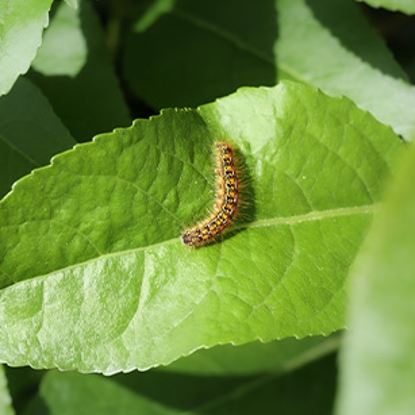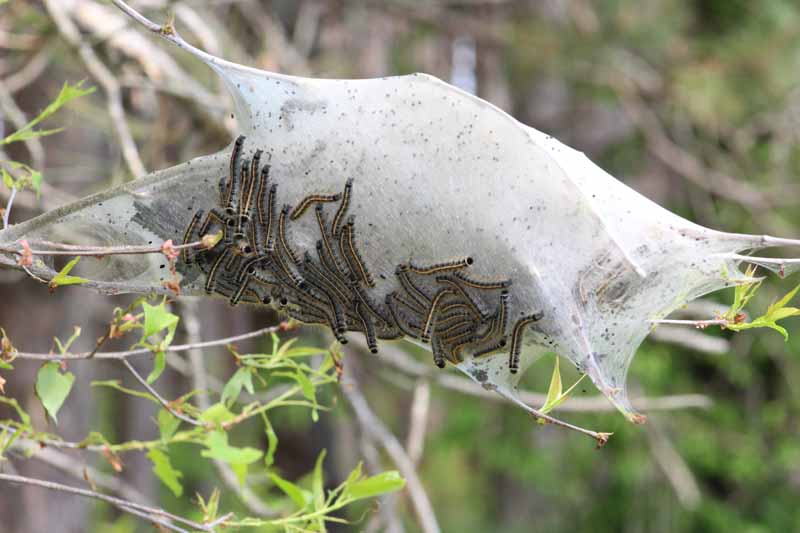
Tent Caterpillars

About
All tent caterpillars are fuzzy, not smooth, and they lack the large tufts of hair at either end that some other caterpillars have.
They also all have either a stripe, multiple stripes, or a broken line of splotches on their bodies.
Because they all look different and there isn’t one defining physical characteristic to distinguish them from other caterpillars, it’s easiest to identify tent caterpillars in general by the characteristic tents they make, and the damage they do to trees.

These pests are voracious eaters, chewing up foliage as they crawl along the branches of the trees.
You’ll notice leaves with ragged edges or defoliated branches at first, followed by the entire tree being defoliated in extreme cases.
Interestingly, as the caterpillars crawl around the tree, they leave a silken strand behind them.
If one finds a good branch full of big, juicy leaves, it will leave the thread intact so that its fellow larvae can follow the thread to a nice meal.
But if it goes down a branch without much to eat on it, the caterpillar will sever the thread so that other caterpillars don’t waste their time looking for food there
Ways to kill tent caterpillars include:
Treatment spray, which is selective and safe for other wildlife.
- Pick off caterpillars individually.
- Destroy egg masses by pruning affected branches.
- Use tools to remove webs.
- Encourage predators (put out a bird feeder).
- Use yellow or amber lighting outdoors to discourage tent worm moths.
- Remove larvae by clipping and destroying the tents.
- Use natural predators like ground beetles and parasitic wasps